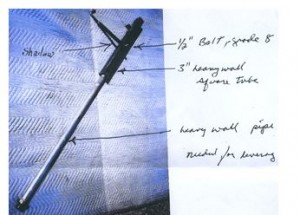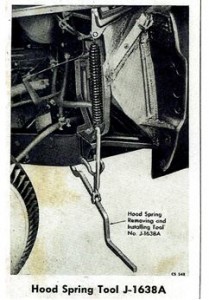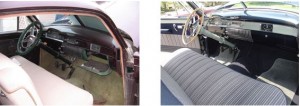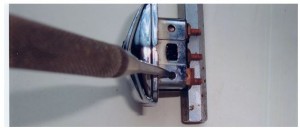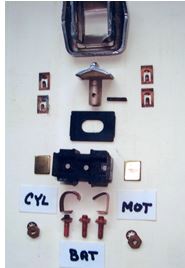During the 25 years I’ve owned my 6107, my tail lights have failed twice. Once was during a New England Region Driving Tour in the 1990s; the second was just a few weeks ago on a local street near my home. In both cases, I had turned on the headlights and a motorist admiring the car at a stop light pointed out the deficiency. Also, in both instances I assumed the problem was in the headlight switch and partially removed it to correct a loose wire.
Partially taking out the headlight switch, without detaching the many wires connected to it, is not difficult technically. However, it is a pain in the [choose your body part] because its location at the extreme upper left corner of the dashboard makes access difficult, particularly if you have large hands. The only reference to the switch in the ’49 shop manual is a picture of it on page 196, so I hope the following is an improvement.
1. Disconnect one or both cables from the battery and put the transmission in R (or in gear if a stick shift). Release the hand brake and unfasten the two bolts holding the bracket supporting the hand brake shaft from the bottom of the dash. Let the hand brake shaft and bracket hang down below its normal position.
2. The body of the headlight switch under the dash is box-shaped and roughly rectangular, about 3 inches (7.5 cm.) long from front to back, with several wires connected to it on both sides. Look at the illustration of the switch in the shop manual on page 196. You will see there is a “Knob Release Button” on the side of the switch facing the center of the car under the dash. Pull the exterior headlight switch knob fully out to its second (headlights on) position. With the hand brake mechanism now out of the way, lie on your back, slowly slide your hand up to the button on the side of the switch behind the dash and press the button. With your other hand you should now be able to fully extract (remove) the exterior headlight switch knob and its shaft from its place in the dash.
3. With the knob and shaft removed, the resulting empty hole in the switch bezel will accept a small Allen wrench, which you will then use to unscrew and remove the bezel.
4. The threaded dashboard end of the behind-the-dash part of the switch is now visible. Put your hand back behind the dash and push the rectangular part of the switch toward the front of the car until it is free of the dash. Then, with all the wires still attached, gently pull it down toward the bottom of the dash. This will take some twisting and pulling, but it can be done since the wires connected to the switch are relatively long. (Be careful that you don’t disturb the wires on the nearby fuel gauge.) Once it is pulled down and the switch body is visible, you can examine the headlight switch and its wires.
The first time I did this back in the ‘90s, the wire for the tail lights had become disconnected from the headlight switch for unknown reasons. Looking at the “Chassis Electrical” diagram on page 203 of the shop manual, you’ll see that the headlight switch is in the left center of the diagram and that the tail light wire is connected to the terminal numbered “3”. I re-connected the wire and solved the problem.
When this happened for the second time a few weeks ago I found the tail light wire still connected to Terminal 3, revealing to my great annoyance that I had partially removed the headlight switch for nothing. However, looking straight back under the dash to the upper left corner of the inner side of the firewall, I noticed something was not right with a large plug held in a clip attached to the firewall. This plug connects the under-dash part of the tail light wire harness with the back part of this same wire harness going to the rear of the car. (From this plug, the rear part of the harness runs up the side of the windshield, then between the headliner and the roof to the trunk and the tail lights.) The two halves of this plug had become disconnected from one another for some reason, so connecting them back together solved the problem.
5. Everything is put back in reverse order. An exception is the exterior headlight switch knob and shaft, which can merely be pushed back into its place in the bezel and switch without pressing the button on the under-dash part of the headlight switch.
newsletter

